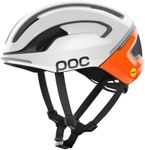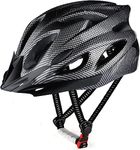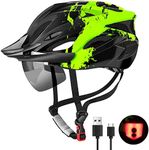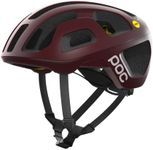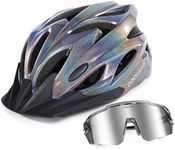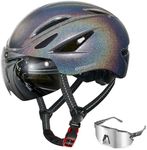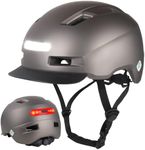Buying Guide for the Best Road Bike Helmets
Choosing the right road bike helmet is crucial for your safety and comfort while cycling. A good helmet can protect you in case of an accident and also enhance your riding experience. When selecting a helmet, consider factors such as fit, weight, ventilation, aerodynamics, and safety certifications. Understanding these key specifications will help you make an informed decision and find the best helmet for your needs.FitThe fit of a helmet is one of the most important aspects to consider. A helmet that fits well will stay securely on your head and provide the best protection. Helmets come in different sizes, usually measured in centimeters around the head. To find the right fit, measure your head circumference and compare it to the helmet size chart. A good fit should be snug but not too tight, and the helmet should sit level on your head with the front edge one inch above your eyebrows. Adjustable straps and retention systems can help fine-tune the fit.
WeightThe weight of a helmet can affect your comfort, especially on long rides. Lighter helmets are generally more comfortable and less tiring to wear. Helmet weights can range from around 200 grams to over 400 grams. If you plan on doing long-distance rides or racing, a lighter helmet might be more suitable. For casual or short rides, the weight might be less of a concern. Consider your riding style and how much time you spend on the bike when choosing the weight of your helmet.
VentilationVentilation is important for keeping your head cool and comfortable, especially during hot weather or intense rides. Helmets with more vents allow better airflow, which helps to dissipate heat and moisture. The number and size of vents can vary, with some helmets having over 20 vents. If you ride in hot climates or tend to sweat a lot, look for a helmet with good ventilation. For cooler climates or winter riding, you might prefer a helmet with fewer vents to retain warmth.
AerodynamicsAerodynamics can be a key factor for competitive cyclists looking to reduce wind resistance and improve speed. Aerodynamic helmets are designed to minimize drag and can make a noticeable difference in performance. These helmets often have a sleek shape and fewer vents to reduce air resistance. If you are a racer or time-trialist, an aerodynamic helmet might be beneficial. For recreational riders, aerodynamics might be less critical, and a more ventilated helmet could be preferable.
Safety CertificationsSafety certifications ensure that a helmet meets certain standards for impact protection. Common certifications include CPSC (Consumer Product Safety Commission) in the US, CE (Conformité Européenne) in Europe, and AS/NZS (Australian/New Zealand Standard). Always check that the helmet you choose has the appropriate certification for your region. This guarantees that the helmet has been tested and meets safety requirements. Prioritize helmets with recognized safety certifications to ensure maximum protection.
